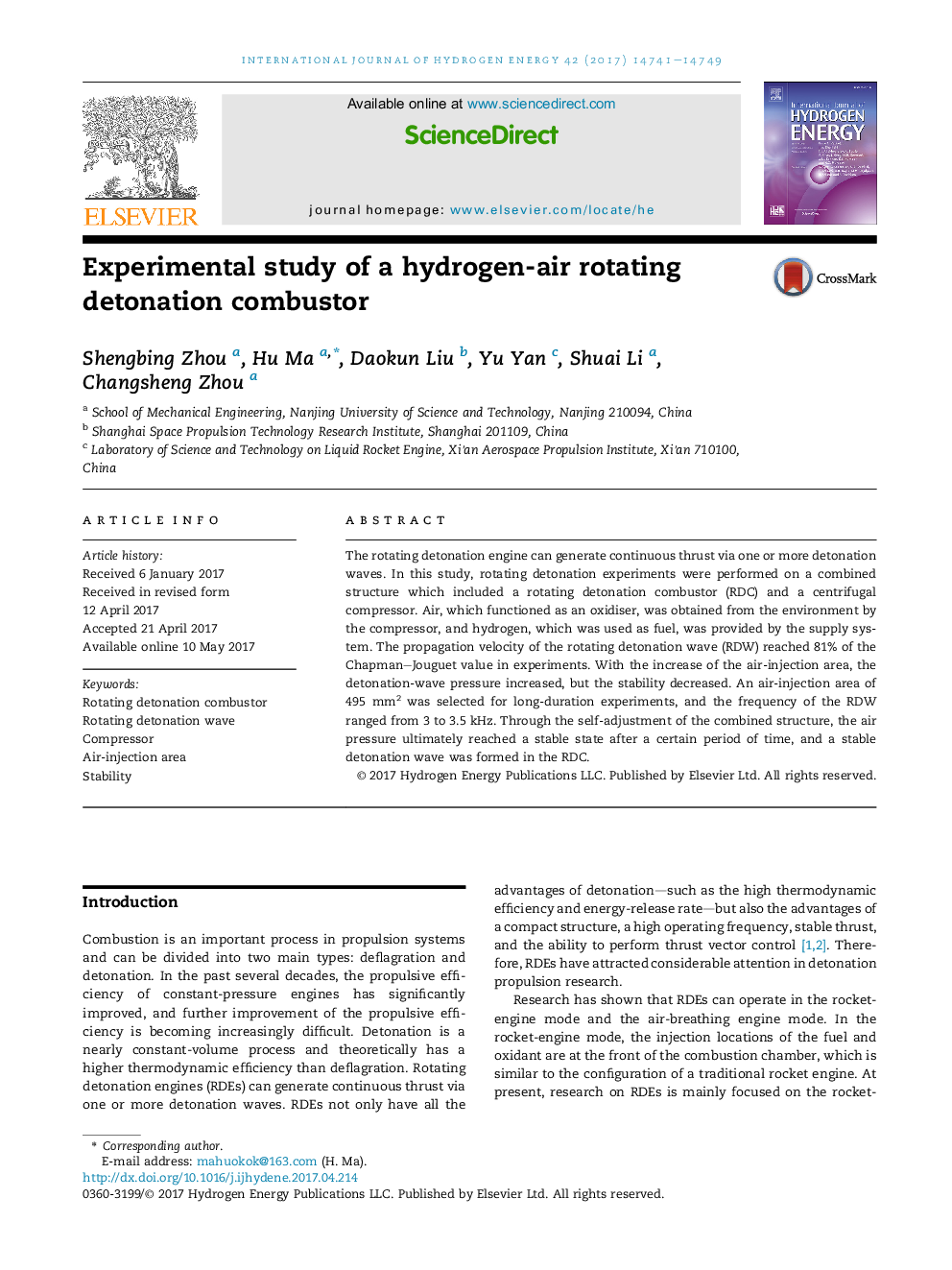| Article ID | Journal | Published Year | Pages | File Type |
|---|---|---|---|---|
| 5145604 | International Journal of Hydrogen Energy | 2017 | 9 Pages |
â¢Experiments were performed on a structure combining a RDC and a compressor.â¢The initiation and propagation characteristics of the RDW were investigated.â¢The long-duration operation feasibility of the combined structure was verified.
The rotating detonation engine can generate continuous thrust via one or more detonation waves. In this study, rotating detonation experiments were performed on a combined structure which included a rotating detonation combustor (RDC) and a centrifugal compressor. Air, which functioned as an oxidiser, was obtained from the environment by the compressor, and hydrogen, which was used as fuel, was provided by the supply system. The propagation velocity of the rotating detonation wave (RDW) reached 81% of the Chapman-Jouguet value in experiments. With the increase of the air-injection area, the detonation-wave pressure increased, but the stability decreased. An air-injection area of 495Â mm2 was selected for long-duration experiments, and the frequency of the RDW ranged from 3 to 3.5Â kHz. Through the self-adjustment of the combined structure, the air pressure ultimately reached a stable state after a certain period of time, and a stable detonation wave was formed in the RDC.
